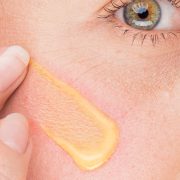What Toners Actually Do, and Whether They’re Worth a Spot in Your Routine
Posted on July 13, 2025 Written by: 100% PURE®

Toner has been around in skincare for ages. It started out as a way to clean up any leftover residue after washing your face—especially when cleansers were a lot harsher. Most old-school toners were packed with alcohol and made to control oil and tighten pores, but they often left skin feeling dry and irritated.
That’s why some people started thinking toner wasn’t really necessary anymore. But skincare has come a long way. Now, toners are all about hydration and soothing ingredients like rose water or hyaluronic acid, helping your skin absorb the rest of your routine better and feel more balanced.
What Is a Toner, Really?
Toner is a liquid skincare step used after to prep the skin for products that follow. Traditional toners were alcohol-based astringents meant to remove residue and balance pH after harsh soaps, but they often left skin dry and irritated. Modern toners have evolved into hydrating, soothing formulas with ingredients like rose water, hyaluronic acid, and green tea. Unlike essence, which delivers active ingredients, or , which cleanses, toner preps, and balances the skin. It’s now a gentle, supportive step that helps your skincare routine work more effectively—far from the stinging toners of the past.

The Science Behind Toners: What They’re Formulated to Do
Toners are designed to support the skin after cleansing. One of their key roles is to rebalance the skin’s pH, which can become disrupted by even mild cleansers. Healthy skin typically maintains a slightly acidic pH (around 4.5–5.5), which supports the barrier function and protects against irritation and harmful bacteria. Toners help restore this .
They also help remove leftover residue such as cleanser, makeup, or excess oil, ensuring the skin is clean and ready to better absorb serums and moisturizers.
Modern toners go beyond cleansing and balancing. Many are packed with hydrating and soothing ingredients like hyaluronic acid, rose water, aloe vera, and niacinamide, offering added benefits like pore refinement, calming inflammation, and boosting overall moisture—making them a valuable step in today’s skincare routines.
Types of Toners and Who They’re For
have come a long way, and now there’s a type for every skin need. Here’s a quick breakdown of the most common types and who they’re best suited for:
1. Hydrating Toners
These are packed with ingredients like hyaluronic acid, glycerin, and floral waters (like rose or lavender). They’re ideal for dry, sensitive, or dehydrated skin, helping to boost moisture and soothe irritation.
2. Brightening Toners
Formulated with niacinamide, rice water, or vitamin C-rich citrus extracts, these toners work best for dull or uneven skin tones, helping to fade dark spots and give a radiant glow.
3. Clarifying Toners
Containing tea tree oil, witch hazel, or willow bark, these are great for oily or acne-prone skin, helping to reduce excess oil and calm breakouts.
4. Exfoliating Toners
With AHAs (like glycolic or lactic acid)or BHAs (like salicylic acid), these toners gently slough off dead skin cells, unclog pores, and improve texture—ideal for congested or mature skin, but should be used with care, especially on sensitive skin.
Choosing the right toner depends on your skin’s specific needs—hydration, brightness, clarity, or smoothness.

Toner vs Serum: What’s the Difference?
Toners and serums are both important, but they serve different roles. Toners are light, watery liquids used after cleansing to rebalance pH, remove residue, and prep the skin. Serums are thicker and more concentrated, targeting specific concerns like hydration, brightening, or aging.
In terms of layering, toner goes on first, right after cleansing, followed by serum. Think of toner as a primer that helps your serum absorb better.
While both can contain beneficial ingredients, serums deliver more active ingredients, making them more effective for treating specific skin concerns like fine lines or dark spots.
Are Toners Really Necessary? Here’s When You Should Use One
Toners aren’t a must for everyone, but they can make a significant difference depending on your skin’s needs.
Dry or dehydrated skin benefits from hydrating toners with ingredients like hyaluronic acid or rose water, helping to lock in moisture.
Oily or acne-prone skin can benefit from clarifying toners with tea tree, witch hazel, or gentle exfoliants to refine pores and control excess oil.
Sensitive skin may find relief with soothing toners containing chamomile, aloe, or calendula, which calm irritation and reduce redness.
If you’re using strong actives like retinol or acids, a pH-balancing toner can help maintain your skin’s protective barrier and reduce the risk of irritation.
How to Choose the Right Toner for Your Skin Type
depends on what your skin truly needs. Here’s a quick guide to help you pick the perfect match:
Dry Skin: Go for toners with rose water, calendula, or hyaluronic acid—these help hydrate, soothe, and keep moisture locked in.
Oily/Acne-Prone Skin: Look for tea tree, willow bark, or other clarifying ingredients to help reduce oil, clear pores, and prevent breakouts.
Mature Skin: Toners with fermented rice water, peptides, and vitamin-rich botanicals can support skin firmness, brighten tone, and enhance elasticity.
Sensitive Skin: Stick to minimal-ingredient formulas with calming botanicals like aloe, chamomile, or cucumber to reduce redness and irritation.
How to Properly Use a Toner in Your Routine
Use toner twice daily—AM and PM—right after cleansing and before applying serums or moisturizers. It helps prep the skin and restore balance.
- Use clean hands to pat toner in if you want hydration and minimal waste.
- Use a cotton pad for wiping away residue or oil.
- Use a mist for a quick refresh or mid-day hydration.
A few drops are enough—just enough to lightly coat the skin. For extra hydration, you can layer it by applying 2–3 thin layers (“7-skin method”).
100% PURE Products to Try
If you’re looking to add a natural toner to your routine, 100% PURE offers a range of clean, plant-based options for every skin type:
A gentle, hydrating formula rich in botanicals like rose and lavender to soothe and calm sensitive or dry skin.
Packed with antioxidants, this toner helps brighten, even tone, and nourish dull or uneven skin.
Ideal for acne-prone skin, this clarifying toner helps reduce breakouts and excess oil without over-drying.
A refreshing mist that hydrates on the go, perfect for dry, tired, or overheated skin.
Infused with marine nutrients, this toner delivers deep hydration and skin renewal—great for mature or dry skin.
Why Toner Still Matters
Modern toners are no longer just harsh astringents—they’ve transformed into versatile, skin-friendly formulas that hydrate, soothe, and support overall skin health. While not a must-have for every routine, they can be a game-changer when chosen wisely. The right toner helps balance your skin, enhance product absorption, and bring out your glow with minimal effort.
FAQs
Q: What is the difference between toner and serum?
Toners are lightweight liquids that balance pH, remove residue, and prep the skin. Serums are thicker and packed with concentrated active ingredients to target specific concerns like hydration, aging, or pigmentation.
Q: Should I use toner every day?
Yes—most toners are gentle enough for daily use, morning and night. However, exfoliating toners (with AHAs or BHAs) should be used 2–3 times a week depending on your skin’s sensitivity.
Q: Can toner shrink pores?
Toners can’t physically shrink pores, but clarifying or exfoliating toners can help unclog and tighten them, making them appear smaller.
Q: Is toner good for acne?
Absolutely. Toners with tea tree, salicylic acid, or witch hazel can help control oil, calm inflammation, and reduce breakouts.
Q: Do I apply toner before or after moisturizer?
Apply toner right after cleansing and before serum or moisturizer. It preps your skin to absorb the next steps more effectively.




